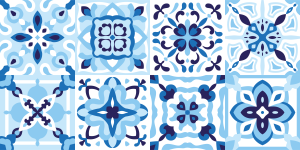
El 28 de noviembre se celebra el Día del Mediterráneo con la finalidad de fomentar una identidad mediterránea común y promover así, los intercambios interculturales, abrazando la diversidad de esta región.
Esta efeméride se debe al lanzamiento del Proceso de Barcelona (1995), que dio lugar al compromiso de los países euromediterráneos para convertir la región en un espacio común para la paz, la estabilidad, el progreso socioeconómico compartido y el diálogo entre los pueblos. De esta manera, en este acontecimiento, se creó la Unión por el Mediterráneo (UpM) EN 2008. Este Día se celebra en países de toda la cuenca mediterránea y en algunos Estados Miembros de la Unión Europea.
Además, cabe reconocer que los pueblos del Mediterráneo han hecho a la civilización durante milenios y por ello, en este Día se celebra la riqueza y la diversidad cultural en el contexto del siglo XXI. Si nos fijamos en el origen de la palabra, el nombre Mediterráneo procede del latín “Medi Terraneum” y significa “mar en medio de tierras”. Ello explica el hecho de que sus aguas bañan las costas de 21 países, 69 ríos desembocan en este mar y cuenta con diversos puertos importantes de gran actividad.
El mar Mediterráneo está separado del Atlántico por el estrecho de Gibraltar, unos 14 km separan África de la Península Ibérica. La cuenca del Mediterráneo se considera una cuenca semicerrada porque su única conexión con el océano es el Estrecho de Gibraltar, que separa Europa de África. Se trata de un mar con fuerte salinidad, la cual a 5 metros de profundidad es un 3,8%. Esta alta salinidad se debe a que pierde tres veces más agua por evaporación en comparación con el agua dulce que recibe de todos los ríos que desembocan en él. Además, cabe mencionar que se trata de un mar muy fértil, con más de 17.000 especies marinas descritas y un amplio rango de ecosistemas. Por otro lado, el mar Mediterráneo está formado, además, por 13 mares menores: mar de Alborán, mar Menor, la laguna de Nador, mar Balear, mar Ligúria, mar Tirreno, mar Adriático, mar Jónico, mar Egeo, mar de creta, mar de Libia, mar de Sicilia y el mar Levantino.
En definitiva, el Mar Mediterráneo no es sólo producto y resultado de numerosas culturas, sino que es pura inspiración para la generación de una identidad única que incluye áreas de patrimonio tan valiosas como la gastronomía, las expresiones artísticas, la mitología, la iconografía, la arquitectura propia y la arqueología, entre otras.
__
MEDITERRANEAN DAY
Mediterranean Day is celebrated on November 28 with the aim of fostering a common Mediterranean identity and promoting intercultural exchanges, embracing the diversity of this region.
This anniversary is due to the launching of the Barcelona Process (1995), which resulted in the commitment of the Euro-Mediterranean countries to turn the region into a common space for peace, stability, shared socio-economic progress and dialogue between peoples. Thus, in this event, the Union for the Mediterranean (UfM) was created IN 2008. This Day is celebrated in countries throughout the Mediterranean basin and in some Member States of the European Union.
In addition, it should be recognized that the peoples of the Mediterranean have made civilization for millennia and therefore, this day celebrates the richness and cultural diversity in the context of the 21st century. If we look at the origin of the word, the name Mediterranean comes from the Latin “Medi Terraneum” and means “sea in the midst of lands”. This explains the fact that its waters bathe the coasts of 21 countries, 69 rivers flow into this sea and it has several important ports of great activity.
The Mediterranean Sea is separated from the Atlantic by the Strait of Gibraltar, about 14 km separating Africa from the Iberian Peninsula. The Mediterranean basin is considered a semi-enclosed basin because its only connection with the ocean is the Strait of Gibraltar, which separates Europe from Africa. It is a sea with high salinity, which at a depth of 5 meters is 3.8%. This high salinity is due to the fact that it loses three times more water by evaporation compared to the fresh water it receives from all the rivers that flow into it. In addition, it is worth mentioning that it is a very fertile sea, with more than 17,000 described marine species and a wide range of ecosystems. On the other hand, the Mediterranean Sea is also made up of 13 smaller seas: the Alboran Sea, the Minor Sea, the Nador Lagoon, the Balearic Sea, the Ligurian Sea, the Tyrrhenian Sea, the Adriatic Sea, the Ionian Sea, the Aegean Sea, the Cretan Sea, the Libyan Sea, the Sicilian Sea and the Levantine Sea.
In short, the Mediterranean Sea is not only the product and result of numerous cultures, but it is pure inspiration for the generation of a unique identity that includes such valuable areas of heritage as gastronomy, artistic expressions, mythology, iconography, architecture and archaeology, among others.
__

